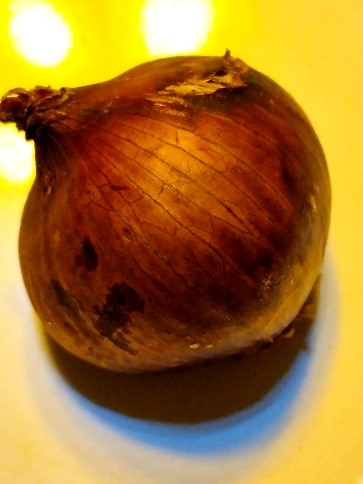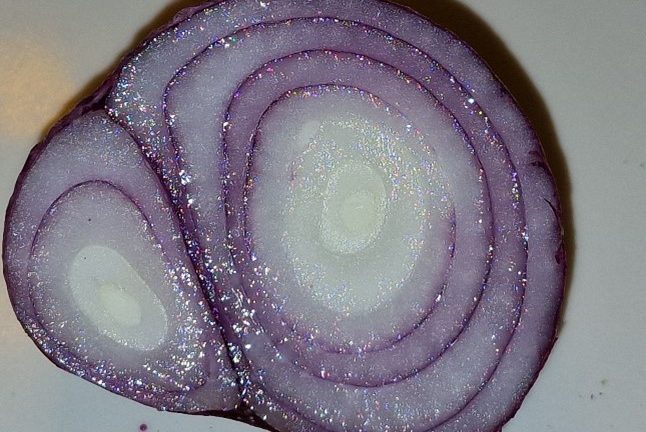My musing over crying and tears is not supposed to be scientific, but it is worth mentioning what tears are scientifically before moving on to what they are in our lives. Tears are mainly water with a mix of salts, enzymes, proteins, and lipids (lipids are fatty, waxy, or oily compounds). They are categorized into three main types: (1) basal, constantly lubricate, nourish, and protect the eyes (2) reflex produced in response to irritants like smoke, dust, or onions and (3) emotional, released during intense emotions like sadness, joy, or stress.
Crying is a bodily response prompted by emotions, physical pain, or irritants. It is a combination of emotional expression and physiological processes that often lead to the shedding of emotional tears. Crying can manifest without tears, depending on how one is dehydrated or due to medical conditions or cultural or personal suppression of outward emotional expression. There is no age limit to crying. I will come to that later.
We talk of tears of joy and tears of grief. We shed tears of joy during moments of overwhelming happiness, relief, or deep emotional connection. Tears of grief are associated with sadness, loss or deep sorrow, serving as an important part of the grieving process. Tears of grief are said to release stress hormones and promote psychological healing providing the body with a natural way of coping with emotional pain. I encourage people to cry when they have lost a person they love. I have found it “reviving”, making me ready to cope with the stressful situation. Despite the contrasting origins of the two types of tears, tears of joy and tears of grief, they both reflect the depth of human emotions and serve as a powerful way of expressing what words cannot fully convey.
Tears have physical and emotional benefits in our daily lives. The physical benefits include keeping the eyes moist and free of dirt and other harmful substances and protecting the eyes against infections. Tears are essential not only for eye health but also for emotional well-being and social connection. Emotional benefits of tears include release of built-up stress hormones, leading to relaxation, creating a calming effect and expressing emotions.
Symbolically, tears are often seen as a sign of vulnerability or weakness, a call for compassion, or sign of relief. When we show our emotions through tears, we promote a call for sympathy. Tears act as a universal nonverbal signal for defencelessness, emotional pain, or joy. Tears also encourage supportive responses such as comfort, whether through words, physical, or simply being present. Shedding tears removes emotional guards revealing the true individual. A show of raw emotion can strengthen emotional connections. Tears, therefore, not only convey emotions but also invite connection, compassion, and understanding, all of which are fundamental to building and maintaining strong social bonds.

Shedding tears does not necessarily indicate crying. Shedding tears is a physical act of tear production (caused by emotions, irritants, or eye lubrication), crying includes wider emotional and physical responses. For example: we reflexively shed tears without crying when eyes are irritated as when handling onions. We sometimes cry without shedding tears due to deep emotional distress. Shedding tears is therefore not always part of crying. Crying involves a full emotional and physical reaction, while tears can occur independently due to non-emotional triggers.
Crying is a fundamental human expression, serving various physiological, emotional, and social functions. From infancy, crying is the primary means of communication, signalling needs and drawing attention to discomfort, hunger, or distress. As individuals grow, crying evolves from a reflexive response to a more complex emotional and social behaviour, expressing sadness, frustration, relief, or even joy or a manipulative tool.
We are told that a cry of a newborn baby is a natural response to the change in its living conditions. Before a child is born, nutrition and oxygen supply reach the body directly via the umbilical cord and the placenta. When the child’s placenta is clamped the baby’s body senses that there is no supply of oxygen from the previous source. It will start stimulating the lungs to begin functioning, and this manifests in the form of a cry as the baby literally asks for its first breath. This is like responding to oxygen need by the brain by yawning when tired and your brain is slowing down, or bored and your brain isn’t feeling stimulated and starts to slow, causing its temperature to drop.
Earlier, many doctors would hold the baby upside down firmly around his/her legs and then slap the butt gently. This not only causes slight pain to the child, but the motion also helps loosen any residues that might be obstructing the airways. Constantly doing so can irritate the child enough to begin crying. I am sure I was spanked at birth by a total stranger for doing absolutely nothing apart from agreeing to be born alive.
Some children use crying manipulatively to gain what they want. This type of crying is more intentional and strategic. Paediatricians and expert mothers tell us that while infants cry instinctively to signal basic needs, because they are hungry, tired, cold, or in pain, toddlers and older children sometimes cry manipulatively, having learned that crying produces a response. Understanding why children cry to attract attention helps differentiate between genuine distress and learned behaviour. Crying is also said to strengthen social bonding between children and caregivers, as it prompts affection, soothing, and care. Beyond childhood, crying remains an important emotional outlet for people of all ages. There is a non-causal relationship between crying and age. Crying decreases as we grow and acquire coping mechanisms, however stress, grief, and emotional experiences can still trigger tears. The elderly may cry more, silently without shading tears, due to mental loneliness as they relive past grief.
While the physiological act of crying is universal, the cultural interpretations and expressions of crying vary significantly across cultures, including in Africa.
Sociologists who have investigated crying in Africa tell us that African crying is not a uniform phenomenon but related to cultural tradition, ritual, and social norms. I cannot, in this brief musing, even try to delve deep into its complexity and diversity across the African continent. Just as with all human beings, crying in African cultures is not necessarily a sign of weakness. Crying can express various emotions, including joy, grief, and even strength in overcoming challenges. But different African cultures have their specific rituals and customs with which crying, especially during funerals and other significant life events, plays a significant role.
Certain cultures appoint specific individuals, often women, to publicly display grief on behalf of the family or community. While this tradition may underscore the collective nature of mourning, it can be comical when the professional mourner is not well briefed. I have seen it when the public mourner (crier) laments the passing of a loving father and family provider when the dead person was a woman!
Some African societies discourage overt emotional displays especially among men. We hear of sayings such as “Manly tears flow within” among the Rwandan culture. Men may grieve but without shedding tears. Women, on the other hand, in some cultures are expected to shed copious tears demonstrating grief whether genuine or not.
Sociologists tell us that women tend to cry more than men due to gender related hormonal differences and cultural factors in societies where men are discouraged from crying, while women are often more socially accepted when they do.

I am reminded of a crying in grief event I experienced. While living in Geneva, our downstairs neighbours, an Italian man and his Congolese wife, lost their teenage son due to drug overdose. The wake became an emotional intersection of cultural traditions and expressions of grief as I discovered when I went to give my condolences to the bereaved neighbours. The Italian stepfather was so happy to see me as he was the only man among a group of Congolese women who had come to console their friend, the bereaved mother. He told me that he could not understand how the women would be seated chatting and laughing and then as soon as a female friend arrived, they would all start wailing. The grieving behaviour of Congolese women at a wake in Geneva was an enduring strength of cultural traditions and a sign of the importance of traditional communal support in times of loss. Understanding and respecting these cultural practices not only provides comfort to those who grieve but also highlights the diverse ways in which humanity copes with loss.
Away from the type of crying I have been musing about; the verb to cry is used in other contexts. For example, crying out to God meaning calling out to God for help. As in Mark 1:3 or Luke 3:4 or John 1:23 quoting the prophet Esaias “The voice of one crying in the wilderness, ‘Prepare ye the way of the Lord, make his paths straight’.” Another example is of Jesus on the cross crying out: “My God, My God, why have You forsaken Me?” Mark 15:34. There are many other examples in the Bible although my interest is in the New Testament. A similar reference in the Quran is: “Crying due to fear of Allah brings deliverance from hell.”
Some unusual behaviours or actions can be seen as a cry for help. For example, anorexia, a treatable eating disorder, or an attempted suicide, can be seen as a cry for help. These are voiceless cries probably not even directed to anyone. Their interpretation and response are left to the ability of those around the sufferer to respond.
“For crying out loud” is a common phrase used to express intense irritation, exasperation or disbelief. It is a euphemism for “for Christ’s sake”. The phrase is the verbal equivalent of a facepalm (the act of hiding ones face to signify embarrassment, disappointment or annoyance), a hearty sigh or an eye roll that lets you vent your frustration without resorting to unacceptable language.
I hope none of the visitors to my website has been inclined to say: “For crying out loud, can you stop posting these ridiculous blogs and podcasts”. To such a visitor I say, “Calm down, calm down. Enjoy an old man’s lighthearted views on life and match them with yours”.
Prayer warriors in search of a happy life, I am sure flourish John’s Revelation 21:4 “And God shall wipe away all tears from their eyes; and there shall be no more death, neither sorrow, nor crying, neither shall there be any more pain.” The rest of us will continue to shed tears in grief and joy. Cheers.
Thank you for being part of the Fork in the Road Blogs: Reflections on Life. Be sure to look out for the next episode when I will be writing about Invitations. If you gathered something useful, please feel free to share the podcast. My books, Fork in the Road: Creating a future of value starting from where you are and A view round the bend. Setting goals for your life’s journey are available for purchase at Aristoc bookshops in Kampala, Uganda and online at Amazon.
Your comments on my musings are most welcome and let me know whether there is a topic you would like me to muse over.


Comments (2)
Shem Nnaggenda
Interesting, was reflecting on crying, wailing, sobing, sniffing, to each their own!! Culture always wins!
Rtn Stephen
Culture and personality win. Even jovial Shem must have had reasons to sniff.